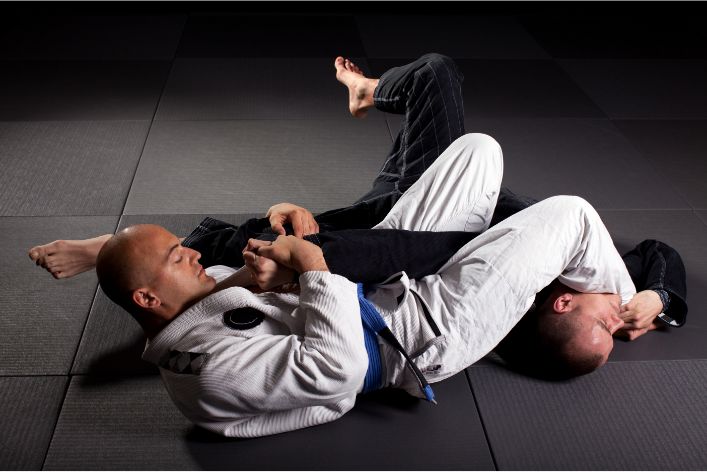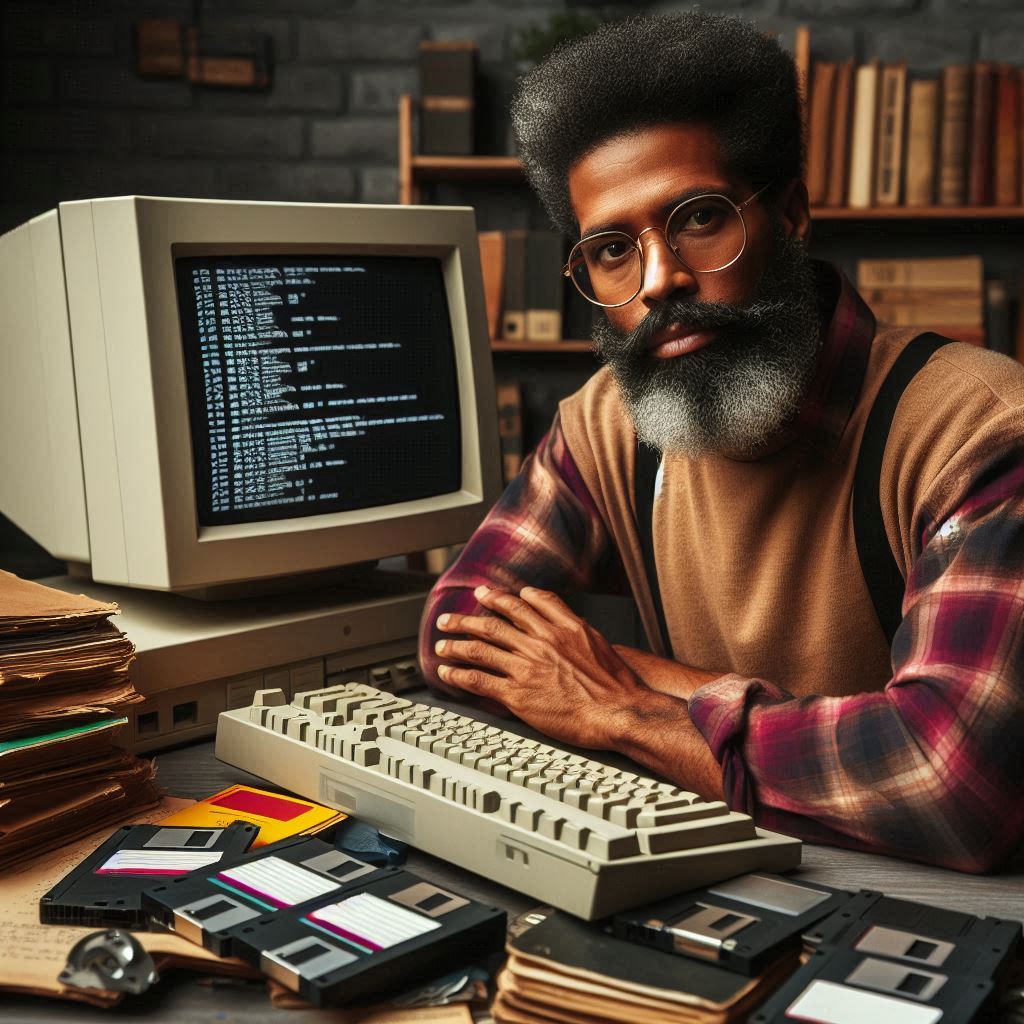Brazilian Jiu Jitsu (BJJ) has a fascinating history that spans several decades. The martial art originated in Japan but was later brought to Brazil, where it evolved and grew in popularity.

In this blog post, we will delve into the origins of BJJ, the individuals who contributed to its development, and the key events that shaped its evolution. We will also explore the purpose of the post and highlight what readers can expect to learn from it.
Origins of Brazilian Jiu Jitsu
Brazilian Jiu Jitsu (BJJ) was developed from the Japanese martial art Judo, which was popularized in Japan by Jigaro Kano in the late 19th century.
It was Mitsuyo Maeda, a Judo expert and member of the Kodokan, who played a significant role in the development of BJJ. In 1914, Maeda was invited to Brazil by a politician named Gastão Gracie.
Maeda was already well-known for his skills in Judo and was eager to introduce the art to the people of Brazil. It was during his time in Brazil that Maeda taught Judo to the Gracie family, who would later develop and popularize BJJ.
Carlos Gracie, the eldest son of Gastão Gracie, became particularly interested in Judo and trained under Maeda for several years. He was so successful that he earned a black belt in Judo, becoming one of the first non-Japanese people to achieve this feat.
Carlos and his younger brother Helio, who was too frail to participate in Judo training, began to develop a new style of martial art that focused on submissions and ground fighting instead of the throws and strikes commonly found in Judo.
This new style became known as Gracie Jiu Jitsu, and it was the precursor to what we now know as Brazilian Jiu Jitsu.
Helio Gracie, who became the face of BJJ, further refined the art by emphasizing technique and leverage over strength and power. He believed that anyone, regardless of size or physical ability, could learn and excel in BJJ.
Under the guidance of the Gracie family, BJJ continued to evolve and grow in popularity, becoming a staple in the martial arts world. Today, it is known as one of the most effective and widely practiced martial arts in the world.
Read: How to Get Started with Jiu Jitsu: A Beginner’s Guide
Growth and Development of BJJ
Brazilian Jiu Jitsu has come a long way since its inception in the early part of the 20th century. It has evolved from a self-defense system to a competitive sport, and has gained immense popularity in recent years.
Evolution of BJJ from a Self-Defense System to a Competitive Sport
Originally, BJJ was created as a self-defense system. Its founder, Helio Gracie, designed it to allow smaller and weaker individuals to defend themselves against larger and stronger opponents. However, over time, the focus of BJJ has shifted from self-defense to sport. Today, BJJ competitions are held all over the world, and athletes from different countries compete against each other to win medals and accolades.
The growth of BJJ as a sport has led to the development of a separate set of rules and regulations for competition. These rules include points systems, weight classes, and time limits. The objective of BJJ competitions is to score points by applying various techniques such as takedowns, submission holds, and sweeps.
Role of the UFC in the Rise of BJJ’s Popularity
The Ultimate Fighting Championship (UFC) played a significant role in the rise of BJJ’s popularity. In the early days of the UFC, BJJ practitioners achieved great success against fighters from different martial arts disciplines. This success helped to showcase the effectiveness of BJJ as a martial art. As a result, BJJ gained a lot of attention and became more popular among fighters and martial arts enthusiasts.
Innovative Tech Solutions, Tailored for You
Our leading tech firm crafts custom software, web & mobile apps, designed with your unique needs in mind. Elevate your business with cutting-edge solutions no one else can offer.
Start NowThe advent of pay-per-view television and social media further accelerated the growth of BJJ’s popularity. The UFC became a household name, and BJJ became more accessible to people all over the world. As a result, more and more people began to take up the sport, and the number of BJJ gyms and academies increased rapidly.
Growth of BJJ Worldwide
BJJ has become a global phenomenon, with practitioners and competitions worldwide. The International Brazilian Jiu Jitsu Federation (IBJJF), BJJ’s largest governing body, oversees its rules and regulations. The IBJJF also organizes prestigious BJJ competitions, including the annual World Championships in California.
BJJ’s global growth is cultivating a new elite athlete generation. They’re expanding the sport’s boundaries and boosting competitiveness. Moreover, diversity in BJJ is rising, as practitioners from varied backgrounds contribute unique styles and techniques.
BJJ has transitioned from a self-defense system to a competitive sport, gaining popularity. The UFC significantly boosted BJJ’s rise, but practitioners’ dedication and hard work also contribute. As BJJ expands globally, the sport’s future developments are exciting to anticipate.
Read: Sumo Wrestling’s Impact on Japanese Culture
Techniques and Training in Brazilian Jiu Jitsu
- BJJ key techniques and principles are based on leverage, angles, and submission holds.
- As a grappling martial art, BJJ emphasizes ground fighting and positions of control.
- The training methods of BJJ are centered around sparring, drilling, and live rolling with partners of different skill levels.
- BJJ training also includes strength and conditioning exercises, such as calisthenics and weightlifting, to improve physical fitness and injury prevention.
- Belt levels in BJJ start with white and progress to blue, purple, brown, and eventually black belt.
- The different belt levels represent increasing levels of technical skill, time spent training, and understanding of BJJ principles.
- Other colored belts, such as gray, yellow, and orange, may be used to signify intermediate levels for children and teens.
- BJJ is known for its strong emphasis on respect, discipline, and humility in training and competition.
- The martial art also values self-defense and often incorporates training in situational awareness and conflict de-escalation.
When starting BJJ, beginners are typically taught basic principles such as maintaining good posture and balance, using leverage and body weight efficiently, and understanding various positions of control and submission.
Embracing the Journey: The Essence and Value of Brazilian Jiu-Jitsu Training
Sparring and live rolling with partners of different skill levels is a key aspect of BJJ training, allowing practitioners to test their techniques in realistic situations and continually refine their skills.
BJJ also places a strong emphasis on physical conditioning, with many gyms incorporating strength and endurance training to supplement technical training.
The different belt levels in BJJ signify a practitioner’s progression towards technical mastery and understanding of the art’s principles. While the road to black belt can be long and challenging, many practitioners find that the journey itself is as rewarding as the destination.
BJJ, upholding values of respect, humility, and discipline, attracts individuals of all ages and backgrounds. Its effectiveness in self-defense adds valuable skills for personal safety.
Ultimately, achieving success in BJJ demands consistent training, an eager learning spirit, and respect for the art’s traditions.
Read: The Diet & Lifestyle of a Sumo Wrestler: A Guide
BJJ Today
As Brazilian Jiu Jitsu continues to grow in popularity, it has become an increasingly competitive sport with high-level athletes from all around the world. The current state of BJJ is one that is full of vibrant energy and excitement, and there has never been a better time to be involved in the community.
Notable Champions and Influential Figures
Some of the most notable champions and influential figures in the BJJ community are:
- Marcelo Garcia – multiple-time world champion and highly respected teacher
- Andre Galvao – founder of Atos Jiu Jitsu and acclaimed competitor
- Bernardo Faria – former world champion and popular instructor with a large following
- Rafael Mendes – one half of the legendary Mendes brothers and multiple-time world champion
- Gordon Ryan – American grappler and ADCC champion, known for his No-Gi skills
These athletes and instructors have left an indelible mark on the sport of BJJ, and their contributions continue to shape the way it is taught and practiced around the world.
Ongoing Advancements in BJJ
As with any martial art, BJJ is constantly evolving. New techniques are being developed, training methods are being improved, and the sport continues to grow and change in exciting ways.
“The ‘leg lock game,’ once an underutilized technique, has recently advanced in BJJ. High-level grapplers now frequently use this popular method.”
Another area of advancement in BJJ is the use of technology in training and competition. Grapplers are now able to use video analysis to review their matches and fine-tune their techniques, and training equipment like grappling dummies have made solo practice more effective than ever before.
Finally, BJJ is becoming more accessible to a wider range of people. Women’s BJJ is seeing a rise in popularity, as more women are taking up the sport and achieving high levels of success. Additionally, BJJ is becoming more inclusive to practitioners with disabilities, allowing anyone to experience the benefits of the sport.
In a nutshell, the future of BJJ is looking bright. With advancements in technique, training methods, and accessibility, there has never been a better time to be a part of this exciting and dynamic community.
Conclusion
Throughout history, Brazilian Jiu Jitsu has evolved into the sport and martial art that we know today. From its origins in Japan to its development in Brazil, BJJ has become a staple in the world of combat sports.
BJJ’s significance lies in its focus on technique and strategy over brute strength and power. It teaches practitioners to defend themselves and subdue opponents using leverage and position.
More than just a physical activity, BJJ also promotes mental discipline, self-control, and respect for others. Through training and competition, practitioners of all levels can improve themselves both physically and mentally.
Basically, Brazilian Jiu Jitsu is a compelling and challenging sport that offers numerous benefits to those who practice it. We encourage readers to explore BJJ and experience the many benefits it has to offer first-hand.
Seamless API Connectivity for Next-Level Integration
Unlock limitless possibilities by connecting your systems with a custom API built to perform flawlessly. Stand apart with our solutions that others simply can’t offer.
Get StartedBefore You Go…
Hey, thank you for reading this blog to the end. I hope it was helpful. Let me tell you a little bit about Nicholas Idoko Technologies. We help businesses and companies build an online presence by developing web, mobile, desktop, and blockchain applications.
We also help aspiring software developers and programmers learn the skills they need to have a successful career. Take your first step to becoming a programming boss by joining our Learn To Code academy today!
Be sure to contact us if you need more information or have any questions! We are readily available.











